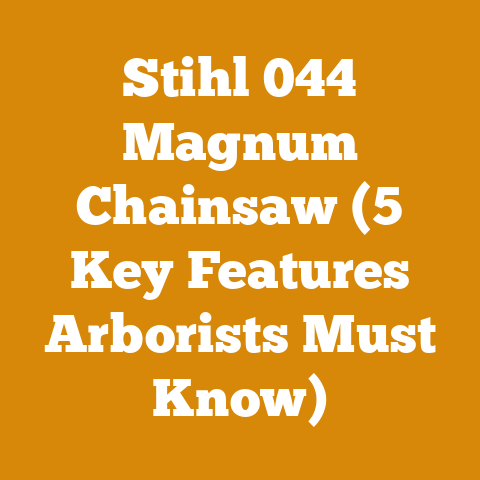SKF Wheel Bearings Review (5 Key Tips for Wood Processing Gear)
Alright, let’s dive into this.
Itchy eyes, a runny nose, and a persistent cough – springtime allergies are the bane of my existence. But you know what else can be a pain? Unexpected equipment failures when you’re in the thick of a wood processing project. That’s why I’m always on the lookout for reliable components, and recently, I’ve been digging into SKF wheel bearings for my wood processing gear. Turns out, these seemingly simple components can make a huge difference in efficiency and cost-effectiveness. I’m going to share my findings with you, focusing on 5 key tips for using SKF wheel bearings and how they impact your budget. Let’s get started!
SKF Wheel Bearings Review (5 Key Tips for Wood Processing Gear)
Wheel bearings are the unsung heroes of many wood processing operations. Think about it: everything from your log splitter to your firewood processor, and even the trailers hauling timber, relies on these little guys to keep things rolling smoothly. A failed bearing can bring your whole operation to a grinding halt, costing you valuable time and money. That’s why investing in quality bearings, like those from SKF, and understanding how to properly maintain them is crucial.
Tip #1: Understanding Bearing Types and Selecting the Right One
Not all wheel bearings are created equal. Different applications demand different bearing types. For wood processing gear, you’ll typically encounter tapered roller bearings and ball bearings.
- Tapered Roller Bearings: These are the workhorses, designed to handle both radial and axial loads. This makes them ideal for heavier equipment like log splitters, trailers hauling timber, and some firewood processors. The “taper” refers to the angle of the rollers, which allows them to distribute loads more effectively.
- Ball Bearings: Ball bearings are generally better suited for lighter-duty applications where speed and low friction are important. You might find them in smaller, portable firewood processors or on some conveyor systems.
Cost Considerations: Tapered roller bearings generally cost more upfront than ball bearings. A single tapered roller bearing from SKF might range from $30-$100 depending on size and load rating, while a ball bearing could be in the $10-$50 range. However, the longer lifespan and increased load capacity of tapered roller bearings can often make them a more cost-effective choice in the long run, especially for heavy-duty applications. I’ve learned this the hard way by trying to save a few bucks on cheaper ball bearings for my log splitter, only to have them fail prematurely.
Data and Insights: According to SKF’s own product specifications, tapered roller bearings can handle significantly higher loads than comparable ball bearings. For example, a specific SKF tapered roller bearing might have a dynamic load rating of 150 kN, while a similarly sized ball bearing might only have a rating of 80 kN. This difference is critical when you’re dealing with the weight of logs and heavy equipment.
Actionable Tip: Before purchasing, consult the equipment manufacturer’s specifications to determine the correct bearing type and size. Don’t try to “upgrade” to a different type without understanding the potential consequences.
Tip #2: Proper Installation is Key to Longevity
Even the best SKF wheel bearing will fail prematurely if it’s not installed correctly. This is one area where cutting corners can be incredibly costly.
Common Mistakes:
- Forcing the Bearing: Never use a hammer directly on the bearing. This can damage the races and rollers, leading to premature failure. Always use a bearing installation tool or a properly sized drift.
- Contamination: Dirt and debris are the enemy of bearings. Ensure the area around the bearing is clean before installation. Use clean tools and wear gloves to prevent contamination.
- Incorrect Preload: Tapered roller bearings require a specific preload, which is the amount of internal load applied to the bearing during installation. Too little preload can cause the bearing to wander and vibrate, while too much preload can generate excessive heat and lead to failure.
Cost Implications: Improper installation can reduce the lifespan of a bearing by as much as 50%. Considering the cost of the bearing itself, plus the downtime and labor required for replacement, this can quickly add up.
Data and Insights: SKF provides detailed installation instructions for all of their bearings. According to SKF’s technical documentation, proper installation can extend bearing life by up to three times. This is a significant return on investment, especially when you consider the cost of downtime.
Actionable Tip: Invest in a bearing installation tool kit. These kits typically include a variety of drivers and adapters that allow you to install bearings without damaging them. They can range in price from $50 to $200, but they’ll pay for themselves in the long run. I personally use a hydraulic bearing press for larger bearings, but for smaller ones, a good driver kit is essential.
Tip #3: Lubrication: The Lifeblood of Wheel Bearings
Proper lubrication is essential for extending the life of your SKF wheel bearings. Lubrication reduces friction, dissipates heat, and prevents corrosion.
Grease Types:
- Lithium-Based Grease: This is a general-purpose grease that works well in a variety of applications. It’s relatively inexpensive and readily available.
- Synthetic Grease: Synthetic greases offer superior performance in extreme temperatures and under heavy loads. They also tend to last longer than lithium-based greases.
- Moly Grease: Moly grease contains molybdenum disulfide, which provides excellent protection against wear and tear. It’s particularly useful in applications where there’s a risk of shock loading.
Greasing Intervals: The frequency of greasing depends on the application and the operating conditions. As a general rule, bearings should be greased every 50-100 hours of operation. However, if you’re operating in dusty or wet conditions, you may need to grease them more frequently.
Cost Analysis: The cost of grease is relatively low compared to the cost of replacing a failed bearing. A tube of high-quality synthetic grease might cost $10-$20, but it can significantly extend the life of your bearings.
Data and Insights: SKF’s research shows that approximately 50% of bearing failures are due to improper lubrication. This highlights the importance of using the right grease and following proper greasing procedures.
Actionable Tip: Invest in a good quality grease gun and develop a regular greasing schedule. Keep a log of when you greased your bearings, and adjust the frequency as needed based on your operating conditions. I use a digital grease gun that tracks the amount of grease dispensed, which helps me avoid over-greasing.
Tip #4: Monitoring Bearing Condition: Early Detection is Key
One of the best ways to prevent bearing failures is to monitor their condition regularly. Early detection of problems can allow you to take corrective action before the bearing fails completely.
Signs of a Failing Bearing:
- Noise: Grinding, squealing, or rumbling noises are all signs of a potential bearing problem.
- Vibration: Excessive vibration can indicate that the bearing is worn or damaged.
- Heat: A bearing that is running hotter than normal may be overheating due to friction.
- Play: Excessive play or looseness in the bearing can indicate wear or damage.
Monitoring Techniques:
- Visual Inspection: Regularly inspect your bearings for signs of damage, such as cracks, rust, or discoloration.
- Temperature Monitoring: Use an infrared thermometer to check the temperature of your bearings. Compare the temperature to the manufacturer’s specifications or to the temperature of other bearings in the same application.
- Vibration Analysis: Vibration analysis is a more advanced technique that uses sensors to measure the vibration levels of your bearings. This can help you detect even minor problems before they become serious.
Cost Savings: Detecting a bearing problem early can save you a significant amount of money. By catching the problem before the bearing fails completely, you can often avoid costly downtime and secondary damage to other components.
Data and Insights: Studies have shown that proactive maintenance programs, which include regular bearing monitoring, can reduce maintenance costs by as much as 30%.
Actionable Tip: Incorporate bearing inspections into your regular maintenance routine. Use a checklist to ensure that you’re checking all of the key indicators of bearing condition. For larger operations, consider investing in vibration analysis equipment or hiring a qualified technician to perform regular inspections. I use a simple infrared thermometer to check bearing temperatures during my regular maintenance checks, and it’s saved me from several potential breakdowns.
Tip #5: Proper Storage and Handling: Protecting Your Investment
Even before you install your SKF wheel bearings, proper storage and handling are crucial to maintaining their condition and preventing premature failure.
Storage Best Practices:
- Clean and Dry Environment: Store bearings in a clean, dry environment to prevent corrosion. Avoid storing them in areas where they might be exposed to moisture, dust, or other contaminants.
- Original Packaging: Keep bearings in their original packaging until you’re ready to install them. The packaging provides protection from dirt and moisture.
- Proper Orientation: Store bearings in a horizontal position to prevent the lubricant from draining out.
Handling Precautions:
- Clean Hands: Always wash your hands before handling bearings. Dirt and oil from your hands can contaminate the bearing and reduce its lifespan.
- Avoid Dropping: Dropping a bearing can damage the races and rollers, even if the damage isn’t immediately visible.
- Use Clean Tools: Use clean tools when handling bearings. Dirty tools can introduce contaminants that can damage the bearing.
Cost-Effectiveness: Proper storage and handling are relatively inexpensive measures that can significantly extend the life of your bearings. By taking these simple precautions, you can avoid wasting money on bearings that are damaged or contaminated before they’re even installed.
Data and Insights: SKF’s technical documentation emphasizes the importance of proper storage and handling. According to SKF, even minor damage to a bearing during storage or handling can reduce its lifespan by as much as 20%.
Actionable Tip: Designate a specific storage area for your bearings. Keep the area clean and organized, and make sure that everyone who handles bearings is aware of the proper storage and handling procedures. I have a dedicated shelf in my workshop for bearings, and I always make sure to wear gloves when handling them.
The Bottom Line: SKF Wheel Bearings and Your Wood Processing Budget
Investing in quality SKF wheel bearings and following these 5 key tips can have a significant impact on your wood processing budget. By extending the life of your bearings, you can reduce downtime, lower maintenance costs, and improve the overall efficiency of your operation.
Here’s a breakdown of the potential cost savings:
- Reduced Downtime: A failed bearing can bring your entire operation to a halt, costing you valuable time and money. By preventing bearing failures, you can keep your equipment running smoothly and avoid costly downtime. I estimate that a single day of downtime can cost me anywhere from $500 to $1000, depending on the project.
- Lower Maintenance Costs: Replacing bearings is a labor-intensive and expensive task. By extending the life of your bearings, you can reduce the frequency of replacements and lower your overall maintenance costs. I typically budget around $200 per year for bearing replacements on my various pieces of wood processing equipment.
- Improved Efficiency: Properly maintained bearings can improve the efficiency of your equipment, reducing fuel consumption and increasing productivity. This can lead to significant cost savings over time. I’ve noticed a definite improvement in the performance of my log splitter since I switched to high-quality SKF bearings and started following a regular greasing schedule.
Real-World Example:
I had a trailer that I used to haul firewood. I was constantly replacing the wheel bearings on this trailer because I was using cheap, low-quality bearings and not maintaining them properly. After switching to SKF bearings and implementing a regular greasing schedule, I haven’t had to replace the bearings in over two years. This has saved me hundreds of dollars in parts and labor.
Final Thoughts:
Wheel bearings might seem like a small and insignificant component, but they play a critical role in the overall performance and cost-effectiveness of your wood processing operation. By investing in quality SKF bearings and following these 5 key tips, you can ensure that your equipment runs smoothly and efficiently for years to come. And that, my friends, is a recipe for success in the wood processing world.






